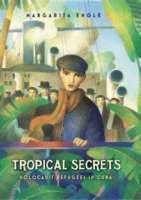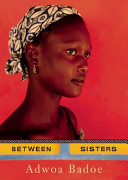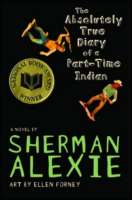by Janelle Mathis, University of North Texas, Denton, TX
 Those who are familiar with the vast range of contemporary novels published today are aware of the diversity of topics, characters, and events that make these books significant and appealing to readers. However, as with the realm of picture books, many readers, adolescents and young adults, are not aware of the powerful contents of these books, and educators working with this population are often even less informed, or their perception is that YA literature is a bridge to the more difficult pieces traditional literature. In discussing Young Adult literature in the Handbook of Research on Children’s and Young Adult Literature (2010), Karen Coats states:
Those who are familiar with the vast range of contemporary novels published today are aware of the diversity of topics, characters, and events that make these books significant and appealing to readers. However, as with the realm of picture books, many readers, adolescents and young adults, are not aware of the powerful contents of these books, and educators working with this population are often even less informed, or their perception is that YA literature is a bridge to the more difficult pieces traditional literature. In discussing Young Adult literature in the Handbook of Research on Children’s and Young Adult Literature (2010), Karen Coats states:
As a body of literature, YA fiction is organized around the same sorts of tensions that preoccupy the physical bodies and emotional lives of its intended audience: tensions between growth and stasis, between an ideal world we can imagine and the one we really inhabit, between earnestness and irony, between ordinary bodies and monstrous ones, and perhaps most importantly between an impulsive individualism and a generative ethics of interconnectedness (p. 316).
In considering the inclusion of both adolescent and young adult novels in this blog, we might also turn to Coats for her distinction between adolescent literature and young adult in that she considers a book with a “closed moral universe” (just retribution for the wicked and reward for the good) to be adolescent, whereas a YA book will “call the moral universe into question” by interrogating social constructions or ambiguity in the moral fabric of represented worlds (p. 322).
In another chapter of the same handbook, Lewis and Dockter (2010) state that Young Adult literature both constructs and reflects our notions of contemporary adolescence. They refer to an article by Zancanella who discusses that the representations of what constitute an English Literature class are outdated. With changing cultural experiences due to technology and diverse world events, adolescents perceive and interact with the world differently than in past eras. The following discussion points to the impact on the teaching and reading of literature by globalization, identity concepts and hybridity, and multimodality. Interestingly enough, these same key points are reflected in recent informal conversations I held with secondary teachers who do make it a point to stay aware of adolescent and YA literature.
I recently asked various secondary teachers what potential role they perceive contemporary novels play in the secondary classroom. The response from each included the role of many of these books to teach about social justice and invite critical conversations. Other comments included that they saw such books bringing much needed diversity into the curriculum. Some see the role of these books as presenting contemporary or historical characters seen through a contemporary lens to which young readers can connect and consider as they build their own identity. Teachers are also intrigued by the role of graphic novels and see a place for it as visual literacy becomes more important in the language arts. Yet others place the most significance on the development of universal themes through contemporary contexts that can connect to traditional literature. This latter focus will be included in the next blog that looks at adolescent literature supporting the classics. The remaining discussion here will share titles that fall within the various categories that reflect the changing role of literature in the English classroom.
 Globalization: While there are many tangents and underlying socio-cultural theories that undergird why globalization is influencing what is considered significant in secondary literature studies, in light of space, we will just consider that globalization “redefines who counts as a relevant, desirable and global citizen,” and therefore students’ expectations of literature is to discover “the ways in which possible identities, discourses, relationships, and futures are represented and broadened by them” (Lewis & Dockter, 79). A variety of topics can be considered valuable to classrooms here. One such topic is that of social issues and social justice as mentioned by the teachers with whom I spoke. As a global citizen, an awareness of the social situations in local, national, and global communities is critical as students consider the various relationships and discourses they may be called upon to assume. Books that look at the changing female role in other nations include titles such as Keeping Corner (Sheth, 2009) or Between Sisters (Badoe, 2010) are important titles. Books that focus on both side of the Israel/Palestine relationship is another potentially powerful area that literature can address through such resources as Tasting the Sky: A Palestinian Childhood (Barakat, 2005), A Little Piece of Ground (Laird, 2006), or Samir and Yonatan (Carmi, 2000). Holocaust novels offer new perspectives on this frequently studied topic in books such as Traitor (Pausewang, 2010), Resistance: Book 1 (Jablonski, 2010), Black Radishes (Meyer, 2010) or Tropical Secrets: Holocaust Refugees in Europe (Engle, 2010). Social issues surrounding the daily lives of teens are reflected in such titles as Twisted (Anderson, 2008), Wintergirls (Andersen, 2009), The Disreputable History of Frankie Landau-Banks (Lockhart, 2008), or Jellico Road (Marchetta, 2008).
Globalization: While there are many tangents and underlying socio-cultural theories that undergird why globalization is influencing what is considered significant in secondary literature studies, in light of space, we will just consider that globalization “redefines who counts as a relevant, desirable and global citizen,” and therefore students’ expectations of literature is to discover “the ways in which possible identities, discourses, relationships, and futures are represented and broadened by them” (Lewis & Dockter, 79). A variety of topics can be considered valuable to classrooms here. One such topic is that of social issues and social justice as mentioned by the teachers with whom I spoke. As a global citizen, an awareness of the social situations in local, national, and global communities is critical as students consider the various relationships and discourses they may be called upon to assume. Books that look at the changing female role in other nations include titles such as Keeping Corner (Sheth, 2009) or Between Sisters (Badoe, 2010) are important titles. Books that focus on both side of the Israel/Palestine relationship is another potentially powerful area that literature can address through such resources as Tasting the Sky: A Palestinian Childhood (Barakat, 2005), A Little Piece of Ground (Laird, 2006), or Samir and Yonatan (Carmi, 2000). Holocaust novels offer new perspectives on this frequently studied topic in books such as Traitor (Pausewang, 2010), Resistance: Book 1 (Jablonski, 2010), Black Radishes (Meyer, 2010) or Tropical Secrets: Holocaust Refugees in Europe (Engle, 2010). Social issues surrounding the daily lives of teens are reflected in such titles as Twisted (Anderson, 2008), Wintergirls (Andersen, 2009), The Disreputable History of Frankie Landau-Banks (Lockhart, 2008), or Jellico Road (Marchetta, 2008).
 Identity & Hybridity: Of course, the notion of globalization greatly impacts identity, but identity also is modeled, shaped, and viewed from different perspectives. The Absolutely True Diary of a Part Time Indian (Alexie, 2007) is seeking his place between the reservation where he is teased and the White man’s land where he seeks his future. In Does My Head Look Big in This (Abdel-Fattah, 2007), a young girl is seeking her place as an American teen post 9-ll who decides to wear the hijab. Both books humorously, but sensitively, relate the struggles for identity in a hybrid situation. Additional titles that speak to the search for identity are Karma (Ostlere, 2011), No and Me (DeVigan, 2010), and La Linea (Jaramillo, 2002) in which a young man having just crossed the border into the US realizes that his biggest challenge is yet to come.
Identity & Hybridity: Of course, the notion of globalization greatly impacts identity, but identity also is modeled, shaped, and viewed from different perspectives. The Absolutely True Diary of a Part Time Indian (Alexie, 2007) is seeking his place between the reservation where he is teased and the White man’s land where he seeks his future. In Does My Head Look Big in This (Abdel-Fattah, 2007), a young girl is seeking her place as an American teen post 9-ll who decides to wear the hijab. Both books humorously, but sensitively, relate the struggles for identity in a hybrid situation. Additional titles that speak to the search for identity are Karma (Ostlere, 2011), No and Me (DeVigan, 2010), and La Linea (Jaramillo, 2002) in which a young man having just crossed the border into the US realizes that his biggest challenge is yet to come.

This only touches the surface of potential titles for the secondary classroom, but hopefully, the brief insights here have invited you to think about your own experiences in secondary classes with adolescent and young adult novels. We would be greatly interested in your experiences, readers’ responses, and resources that are at the top of your adolescent or YA reading list.
Coats, K. (2010). Young adult literature. In S. A. Wolf, K. Coats, P. Enciso, & C. A. Jenkins (Eds.), Handbook of Research on Children’s and Young Adult Literature (pp. 315-329). New York, NY: Routledge.
Lewis, C. & Dockter, J. (2010). Reading literature in secondary school: Disciplinary discourses in global Times. In S. A. Wolf, K. Coats, P. Enciso, & C. A. Jenkins (Eds.), Handbook of Research on Children’s and Young Adult Literature (pp. 76-91). New York, NY: Routledge.
Journey through Worlds of Words during our open reading hours: Monday-Friday, 9 a.m. to 5 p.m. and Saturday, 9 a.m. to 1 p.m. To view our complete offerings of WOW Currents, please visit archival stream.
- Themes: Janelle Mathis, YA
- Descriptors: Books & Resources, Debates & Trends, Student Connections, WOW Currents

Interesting list, I will include this in my reading list <3. Thank you.